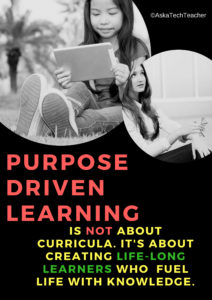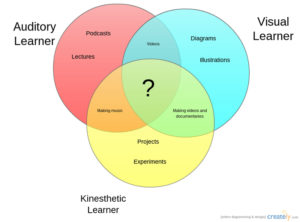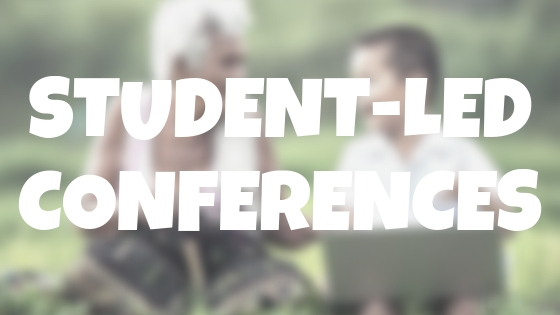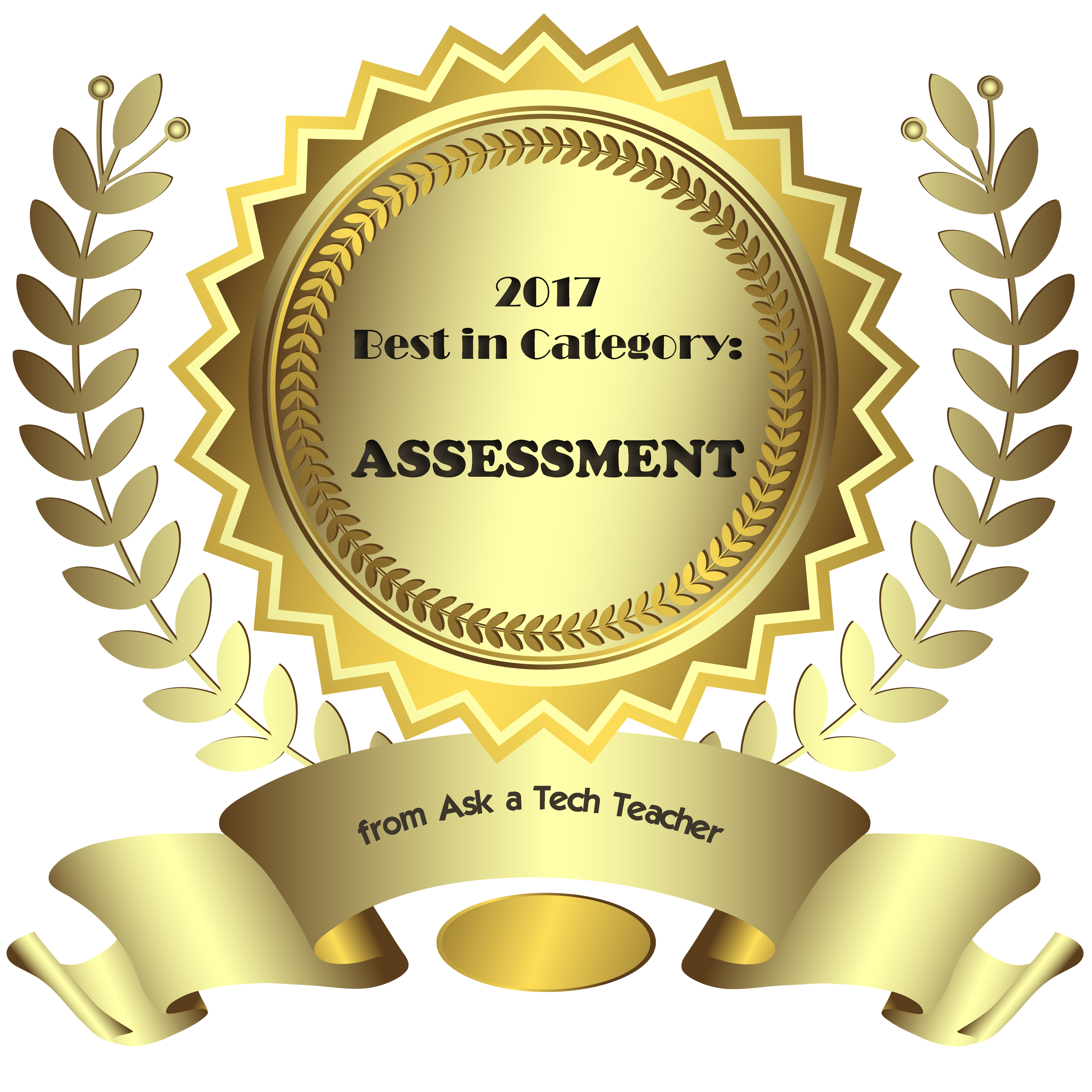Category: Teaching Strategies
How to Do Student-led Conferences
 I remember report card days as a child, me sitting outside on a brick wall, scared to death as my mother met with the teacher and received the (always bad) news about how I wasn’t doing. It never motivated me to try harder, didn’t make me like school better, and angered me at everyone involved.
I remember report card days as a child, me sitting outside on a brick wall, scared to death as my mother met with the teacher and received the (always bad) news about how I wasn’t doing. It never motivated me to try harder, didn’t make me like school better, and angered me at everyone involved.
Fast forward to me as a K-5 teacher. I love report card days now because this is when I get to meet parents. Often, it is the only time I see those who don’t drop in with questions or email me about concerns. Even before it became protocol, I invited students to join the conversation. I wanted to let parent and child know I considered the three of us a partnership in the student’s success.
Today, that inclusive approach is integral to student-led conferences.
What is a student-led conference?
A student–led conference is where students between kindergarten and 12th grade meet with parents (with the teacher quietly at the side) to share the work they completed during the grading period and their progress toward overall goals. Simply stated, student-led conferences are about process not product. Where traditional conferences seek to delineate how students rank academically at a point in time, student-led conferences revolve around the work students have produced. They are less about grading than measuring learning. In fact, the grades earned are secondary to how students understand what happened in the lesson.
The philosophy behind student-led conferences
If we were teaching writing skills, the philosophy would be called “show don’t tell”. In student-led conferences, this means that students demonstrate their acquired knowledge not by a grade but by communicating their progress. For student work to be relevant, students must be engaged, responsible for the learning and involved in reporting that to stakeholders.
Share this:
How Tech Enhances Class Performance
Ask a Tech Teacher contributor, Jane Sandwood, has interesting ideas on blending tech with tradition:
Balancing Technology With Traditional Teaching To Enhance Performance In Class
 California has recently increased state investment in school technology, focusing on better broadband connections and supporting further teaching of computer science. Although there is still some debate about the benefits of increasing use of technology in schools, there appears to be plenty of evidence to show that, if used effectively, it can greatly enhance learning. It isn’t as productive on its own, and shouldn’t be used as a substitute for good teachers. However, blended learning takes the positive aspects of technology and combines them with tried and tested teaching methods. Although children are naturally becoming citizens of the digital world, for them to integrate fully and in a positive way in this new society, they still need guidance from teachers.
California has recently increased state investment in school technology, focusing on better broadband connections and supporting further teaching of computer science. Although there is still some debate about the benefits of increasing use of technology in schools, there appears to be plenty of evidence to show that, if used effectively, it can greatly enhance learning. It isn’t as productive on its own, and shouldn’t be used as a substitute for good teachers. However, blended learning takes the positive aspects of technology and combines them with tried and tested teaching methods. Although children are naturally becoming citizens of the digital world, for them to integrate fully and in a positive way in this new society, they still need guidance from teachers.
Teaching A Mindful Approach
A balanced approach is particularly useful when dealing with the potential negative effects of digital use, and especially social media. Children are now intrinsically linked to the digital world, but they still need to be taught how to navigate through social media safely, and to ensure that their interactions are positive and useful. In some cases, even after guidance, children may still use social media in questionable ways, and this could indicate other underlying issues or vulnerabilities. However, for all children, it’s important to find ways to balance these adverse effects. Taking sessions in mediation and mindfulness can be a useful technique to manage or reduce the negative effects of social media. In addition, they may also help children concentrate and be more attentive in class.
Share this:
Peer Feedback That Works
 Assessing student learning traditionally is accomplished with tests. The problem teachers have with this approach is managing them. If they’re short answer or essay — the preferred way to check understanding — grading takes a long time. And unless assessments are frequent, it’s easy to miss the student who is lost or just doesn’t get it. Even with the advances technology offers in responding directly to students, it can be too time-consuming for large classes.
Assessing student learning traditionally is accomplished with tests. The problem teachers have with this approach is managing them. If they’re short answer or essay — the preferred way to check understanding — grading takes a long time. And unless assessments are frequent, it’s easy to miss the student who is lost or just doesn’t get it. Even with the advances technology offers in responding directly to students, it can be too time-consuming for large classes.
A solution that has become popular is peer feedback. This isn’t new; in fact, it is prevalent in universities. What exactly is peer feedback and how is it being applied to lower grades?
What is peer feedback?
When used as an assessment strategy, peer feedback is much more than casual comments shared between classmates. It is the logical evaluation of one student’s work by another using predetermined characteristics and measures. Through the implementation of a prescribed rubric, a student’s classmate looks at their work and determines if it satisfies the goals of the lesson, the Essential Questions, and the Big Ideas.
One important difference from teacher evaluations is that students don’t grade each other.
Why peer feedback?
Peer feedback has become popular as teachers move to a “teacher-guide” model of education rather than a “teacher-lecturer”. When the time comes in a lesson to assess student learning, instead of a formal test in a quiet room with a clock ticking, teachers employ a system of peer feedback. For many, this is more effective, less stressful, and maintains the goal of encouraging lifelong learners. Sometimes, this is an excellent way to address school budget cuts, large classes, and the burden of too many pieces to be graded. Other times, teachers employ this method because not only the one being reviewed benefits but so too does the reviewer as they must know what the lesson is about to effectively review classmates. As a pedagogical strategy, it teaches critical thinking, one of those traits that is hard to teach but essential to being a productive adult.
Share this:
Purpose Driven Learning: Myths, Problems, and Education Applications
 Purpose Driven Learning (or PDL) is a concept coined by Michael Matera and Adam Moreno to summarize the philosophy that each learner’s inner strengths can be unlocked by focusing with purpose and drive. By following the guidelines for Purpose Driven Learning, teachers avoid the biggest pitfall in many lesson plans — that they are theoretic without meaning in the real world. With PDL, resources are relevant, lessons are personalized, and real-life connections are placed under a bright light. In the end, learning is changed from pedantic to powerful and students learn to reliably connect academic studies to the world outside the schoolhouse.
Purpose Driven Learning (or PDL) is a concept coined by Michael Matera and Adam Moreno to summarize the philosophy that each learner’s inner strengths can be unlocked by focusing with purpose and drive. By following the guidelines for Purpose Driven Learning, teachers avoid the biggest pitfall in many lesson plans — that they are theoretic without meaning in the real world. With PDL, resources are relevant, lessons are personalized, and real-life connections are placed under a bright light. In the end, learning is changed from pedantic to powerful and students learn to reliably connect academic studies to the world outside the schoolhouse.
The Goal of PDL
In a phrase:
…the goal of Purpose Driven Learning is NOT about a curriculum that lasts a year. It’s about creating life-long learners who fuel their future passionately with knowledge.
This applies to both 1) education pursued with the goal of college or career, and 2) the critical preparation of students to succeed in life. Purpose Driven Learning, faithfully delivered with buy-in from students, will result in students willingly participating in even the boring lesson pieces (like worksheets or podcasts) as well as exciting applications like simulations and student-devised projects.
Problems implementing Purpose Driven Learning
Engaging PDL in your classroom is seen by some as teaching students what they want to learn at the expense of what they need to learn but this isn’t true. Done right, students come to understand that real knowledge relies on a solid foundation of data upon which they build their personal interests. For example, students who want to join America’s proposed Space Force must first be grounded in the basics of science and math.
Educators who wish to use PDL often run into three roadblocks:
School Standards. Because state and national standards are often devised to serve the majority of students, they may not well-serve your students. But they do provide a necessary foundation without which the goals of your particular group can’t be met. That means that standards are taught first and additional learning is scaffolded afterward. Standards are in fact the foundation that underpins your students’ ability to achieve their PDL goals.
Share this:
Spotlight: How One Teacher Taught Digital Citizenship Via Student-driven Websites
 Sheila Slawek teaches digital literacy & computer science. I’ve known Sheila a long time and am profoundly impressed by how she passionately and energetically blends technology authentically into the learning lives of her students. When she showed me the websites her 8th grade students put together–by themselves–I begged her to share with my AATT audience how this came about. When you read this, I think you’ll find her can-do attitude and never-quit approach infectious. Here’s her story:
Sheila Slawek teaches digital literacy & computer science. I’ve known Sheila a long time and am profoundly impressed by how she passionately and energetically blends technology authentically into the learning lives of her students. When she showed me the websites her 8th grade students put together–by themselves–I begged her to share with my AATT audience how this came about. When you read this, I think you’ll find her can-do attitude and never-quit approach infectious. Here’s her story:
Beyond Expectations
I’m an inner city, level 4 middle school teacher that provides free daily breakfasts and lunches to a diverse student population. Every semester I receive new students for each grade level and I always wonder, what will we accomplish? I noticed that my eighth-grade class contained 16 students vs. the usual 24 students. The 8th grade just received their own profiled laptop since the school was deploying a blended learning/personalized learning initiative and the 1:1 student laptop was a key project. Of course, being the tech coordinator for this initiative, I was politely asked by a random number of teachers as they passed me in the hall, “so now that the students have laptops, how are they going to learn what they need to be able to use them in my class?” I quickly assessed that the teachers didn’t realize that they will provide instructions regarding the technology their students will use. I was perplexed since I thought to myself, the district has been deploying laptops to schools for 10 years! This initiative was just the next step of student ownership. Ownership of not only the assigned laptops, but ownership of their learning! With all of this going through my mind, I only had time to giggle as we passed each other while walking out students to their destination.
Share this:
August Preview at Ask a Tech Teacher
Here’s a preview of what’s coming up on Ask a Tech Teacher in August:
- Wikispaces has closed. Now what?
- 11 Back-to-school Activities for the First Month of School
- Teaching Digital Rights and Responsibilities
- Websites to teach Moune Skills
- Plan a memorable Back-to-School Night
- The Importance of a Morning Meeting
- Today’s Meet has closed. Alternatives?
- College-level learning online
- How to Teach Critical Thinking
- Tech-ed Resources for your Class
- New Ways to Gamify Learning
- Great Ways to Make Your Class Paper-free
- Differentiating with Personalized Learning
- Back-to-school Activities for teh First Month of School
- Features to make your LMS a social learning platform
Share this:
What is the VARK model of Student Learning?
 If you use the VARK model of Student Learning, you know why I’m excited about it. VARK started as a questionnaire to help students and teachers understand their best approach to learning but has since become more of a guideline for teaching and learning. The questionnaire is deliberately short (thirteen-sixteen questions, depending upon which version you take) in order to prevent student survey fatigue.
If you use the VARK model of Student Learning, you know why I’m excited about it. VARK started as a questionnaire to help students and teachers understand their best approach to learning but has since become more of a guideline for teaching and learning. The questionnaire is deliberately short (thirteen-sixteen questions, depending upon which version you take) in order to prevent student survey fatigue.
The acronym VARK refers to four learning modalities — Visual, Auditory, Reading/Writing, and Kinesthetic. Though often classroom lessons focus on the Visual, with a bit of preparation, they can be taught using all four modalities thus accommodating students who learn best in a different way. Why go through this extra effort? VARK’s creator, Neil Fleming, explains it this way:
- Students’ preferred learning modes have a significant influence on their behavior and learning.
- Information that is accessed through students’ use of their modality preferences shows an increase in their levels of comprehension, motivation, and metacognition.
For me, that extra time and effort is a no-brainer. Let me back up a moment and explain how I got to that point. I realized after a few years of teaching that something was wrong with the methodology I had been taught. Lots of clever, smart kids weren’t getting what I was putting out. I taught in a way that addressed how the majority learned (because that covered most kids, didn’t it?) but that turned out to be more like a plurality. Or less. In fact, where that plurality of kids might be the biggest group in the class, those that weren’t learning in this prescriptive manner was an even bigger group. To say it another way:
What the Bell Curve considers the “typical student” was always far outnumbered by those who weren’t.
Interestingly enough, Dr. Fleming reports that Kinesthetics (the K in VARK) is the most common learning style though not the most common teaching style.
Share this:
Teacher Support in the Digital-Blended Classroom
Technology remains–still–a love-hate relationship between teachers and teaching. Yes, it enriches learning but at the price of too many problems, preparation required, and confusion. I like Felicia Zorn’s summary of how that go-nogo decision really has become ‘get with the program’.
Teacher Support in the Digital-Blended Classroom
Growing up, my generation did not use verbs like ‘Google’ or proper nouns such as ‘Siri’. We were the pioneers of the digital era. We played Oregon Trail, asked Jeeves questions for our research, and waited for hours while Napster downloaded our favorite songs. Now, children are digital natives. Children as young as two are utilizing tablets, exploring the apps on smartphones, and accessing knowledge via the internet. How do we as educators keep up with this trailblazing generation who can navigate technology at breakneck speeds? Or better yet, why should we integrate online learning into our classrooms? There are countless strategies and resources at your fingertips, but this article will spotlight the importance of digital teacher support for your blended learning environment.
Digital resources can save teachers innumerable hours of planning, grading, assigning, and assessing in the classroom. As online resources develop and create more curricula, teachers will transform classroom dynamics by devoting less time to lecturing and spending more time enriching and mentoring. Rigorous, standards-aligned content is uploaded daily to educational websites, apps, and test banks. Most online assignments are auto-graded and scores are sent directly to a digital gradebook for teachers. Assessments can be altered with settings to meet the needs of all students with a few short clicks.
Share this:
12 Fresh Ways to Assess Student Learning
 Assessing student learning used to be as simple as giving a test that consisted of multiple choice, True/False, short answer, and/or essay. How many answers students got right told the teacher how much they knew. No need to look further. Simply grade, record, and move on to the next chapter.
Assessing student learning used to be as simple as giving a test that consisted of multiple choice, True/False, short answer, and/or essay. How many answers students got right told the teacher how much they knew. No need to look further. Simply grade, record, and move on to the next chapter.
Educators have come to realize that there are lots of reasons why a test score doesn’t reflect student knowledge. Maybe the student had a bad day; maybe s/he isn’t good at memorizing (and the test was mostly memorized facts); maybe education researchers are right that doing well on tests isn’t a predictor of student success.
Tossing tests makes a teacher’s job more difficult. I’ll stipulate to that. Habits, templates, and routines are much easier than reinventing the assessment wheel but a tool that results in passionate students committed to lifelong learning gets my attention.
That’s what the next twelve options are: assessment strategies that inspire student interest and allow them to share what they know in ways compatible with their personal communication style. These can be used formatively or summatively and can be created by teachers or students-as-teachers. Decide what works best for your circumstances. The uniting characteristics are that all assess:
Share this:
Visible Learning and John Hattie
 Over the years, I’ve struggled to teach in ways my students would understand. Standing at the front of the classroom stopped working so I researched (and tried in some cases) Whole Brain Teaching (WBT), Socratic Method, Understanding by Design, Mindfulness, and a lot more options that colleagues mentioned as helpful with their differentiated student groups. They all worked for a while and then, maybe when the novelty wore off, I was back to the same Bell curve of successes, failures, and those in between.
Over the years, I’ve struggled to teach in ways my students would understand. Standing at the front of the classroom stopped working so I researched (and tried in some cases) Whole Brain Teaching (WBT), Socratic Method, Understanding by Design, Mindfulness, and a lot more options that colleagues mentioned as helpful with their differentiated student groups. They all worked for a while and then, maybe when the novelty wore off, I was back to the same Bell curve of successes, failures, and those in between.
The same could be said of Standards and curricula adopted in my varied teaching gigs. That includes everything from Common Core to the IB philosophy, from Depth of Knowledge to Project-based Learning. I confess, I found it frustrating. Everything worked for a while and nothing worked in the long term.
That’s when I heard about John Hattie at an education conference I attended and his concept of Visible Learning. John Hattie is a teacher but more significantly, he’s an education researcher. His life’s goal is to determine what education strategies work best for the largest number of students. He engaged in a fifteen-year evaluation of over 50,000 research articles and something like 240 million students — making it the biggest evidence-based education research project ever — and discovered something no one expected and few believed: Almost any approach will work if delivered well. The one foundational element required for success is passionate, involved, committed, flexible teachers:
“The remarkable feature of the evidence is that the greatest effects on student learning occur when teachers become learners of their own teaching, and when students become their own teachers.”
How can that be? According to John Hattie, what he came to call “visible learning” happens when we teachers look at what we’re doing:
“Visible teaching and learning occur when there is deliberate practice aimed at attaining mastery of the goal, when there is feedback given and sought, and when there are active, passionate, and engaging people (teacher, students, peers) participating in the act of learning.







































